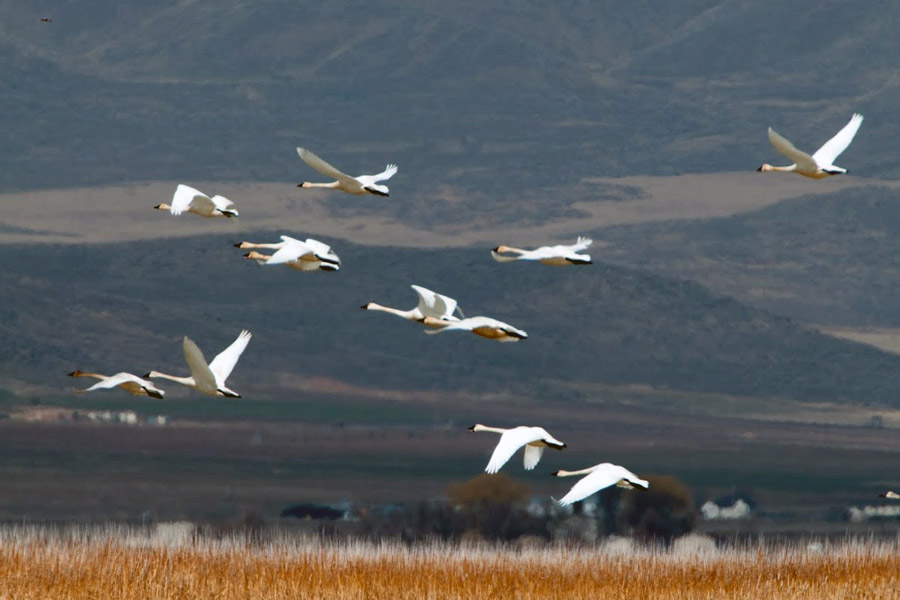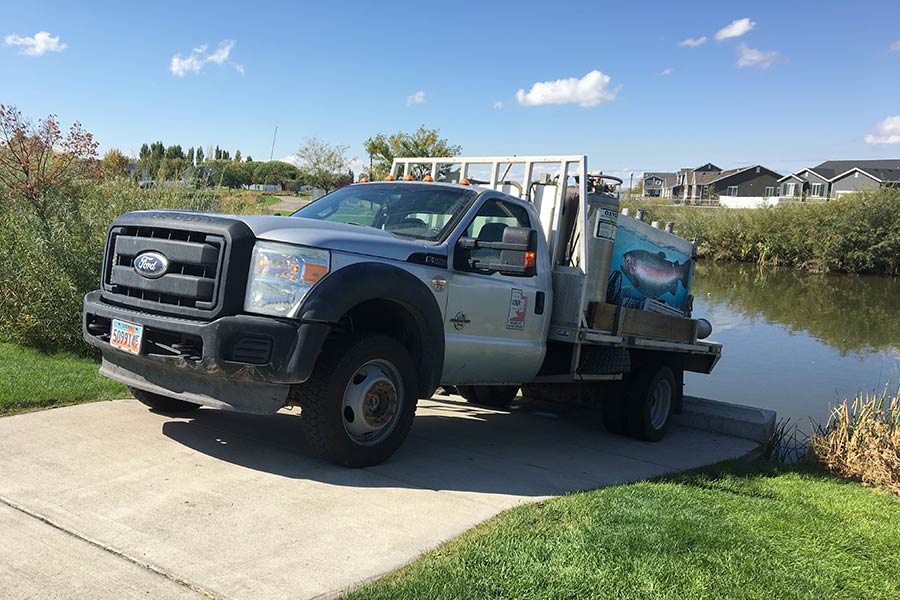DWR stocks over 10 million fish throughout Utah in 2019 to increase fishing opportunities
Salt Lake City — In an effort to enhance fishing throughout the state, as well as boost native fish populations, the Utah Division of Wildlife Resources stocks a variety of fish species throughout Utah each year. In 2019, the division stocked more than 10 million fish into 603 local waterbodies, a total of more than 1.1 million pounds of fish.
The practice of stocking fish in the Beehive State goes back more than a century, as fish were first formally stocked in Utah in 1871. At that time, fish were transported from other states by train and were stocked into lakes along the train route. In 1898, Utah opened its first hatcheries for raising trout locally.
"These original hatcheries were really impounded streams where we put fry that we got from the federal government," DWR sportfish coordinator Randy Oplinger said. "We opened our first traditional fish hatchery — with raceways like we have today — where we produced our own eggs, in 1899 in Murray."
Over time, the DWR expanded its fish hatchery operations, and there are now 13 facilities across Utah. The bulk of the fish stocked in 2019 came from these hatcheries, which produced 9.4 million of the total 10,081,077 fish stocked throughout the state. The other almost 680,000 were transported from various states across the U.S., including Arkansas and Wyoming, as well as from two federal fish hatcheries in Utah.
"Our hatcheries are important because they provide the majority of the fish that we stock in Utah," Oplinger said. "Stocking is a crucial management tool that we use to provide Utahns with the numbers and species of fish that they desire — it helps ensure that the public has a great fishing experience."
There were 20 different fish species stocked in 2019. The DWR produces multiple strains of some species, and some of the fish are sterile (meaning they can't reproduce) — a management tool to help control various populations in different waterbodies. This includes eight different cutthroat trout groups and five separate strains of rainbow trout, as well as channel catfish, largemouth bass and bluegill from Arkansas, and Arctic grayling eggs from Wyoming that are then raised in our local hatcheries. Several native species were also stocked this year, including over 28,000 bonytail chub, almost 4,700 Virgin River chub, and more than 30,000 June suckers, a species only found in Utah Lake. In recent years, June suckers have made an impressive recovery due to conservation efforts and were recently proposed for a downlisting — from endangered to threatened — under the Endangered Species Act.
In 2018, the DWR stocked more than 12 million fish, a total of 1.1 million pounds. The division decided to stock fewer, but larger fish this year. The DWR increased its stocking of 12-inch rainbow trout in 2019 because research has shown that these 12-inch fish are more readily caught by anglers than the 8- to 10-inch rainbow trout the division has traditionally stocked.


















